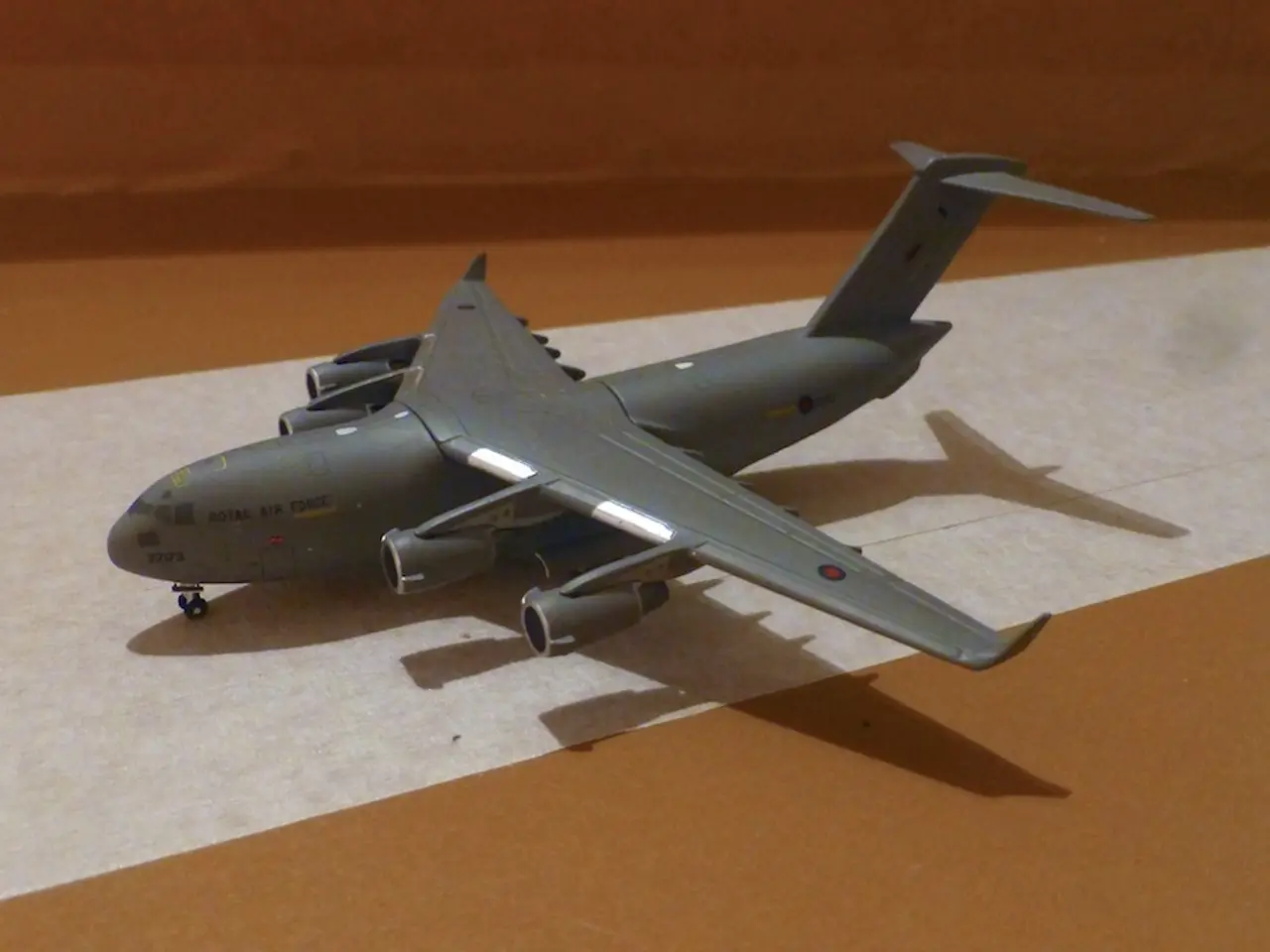Streamlining Emergency Responses with AI-Equipped Aerial Drones
The integration of AI in drones for first response and public safety operations is a promising development, aiming to revolutionize these critical services by making them safer, more efficient, and more effective. However, this integration is not without its challenges.
Current Challenges
Regulatory Frameworks
One of the significant hurdles is navigating the regulatory landscape. Ensuring safety, security, and compliance with evolving laws that balance technological advancement with public safety and privacy concerns is crucial [1].
Ethical Considerations
Ethical issues, such as AI's potential for deception or failure in critical situations, are significant. Ensuring transparency and accountability in AI decision-making processes is paramount [1].
Technical Limitations
Integrating AI systems with existing drone technologies can be complex, especially in ensuring seamless communication and data exchange between different platforms. This requires standardized telemetry and adaptable engineering solutions [4].
Future Opportunities
Autonomy and Efficiency
Advances in AI autopilots will enable drones to self-map routes and adapt to changing conditions, reducing human error and increasing efficiency in logistics and delivery services [1].
Public Safety Enhancements
AI can enhance predictive analytics for crime prevention, improve situational awareness, and support rapid decision-making in emergency situations [1][2].
Environmental Monitoring
AI-powered drones can aid in environmental monitoring, such as tracking deforestation and assessing disaster zones, contributing to sustainable operations [1].
Military Applications
In military contexts, AI can help manage complex airspace operations, integrate drones with other platforms, and enhance situational awareness on rapidly evolving battlefields [2][4].
Civil Liberty Oversight
The integration of AI in drones requires vigilant oversight to ensure that enhanced capabilities do not infringe upon civil liberties, maintaining a balance between technological advancement and societal values [1].
In the future, fleet management systems are being developed to incorporate AI functionalities like real-time object detection and tracking directly into their platforms for a seamless user experience. Despite the scarcity of comprehensive, ready-to-use AI functionalities in the market, the potential for AI in drone operations is immense.
AI can automate routine tasks, provide real-time data for improved situational awareness, and integrate seamlessly with other technologies. Key AI functionalities include object detection and tracking for swift target identification and following. AI reduces response times, minimizes risks to personnel, and improves decision-making processes.
However, the utilization of AI in drone operations remains limited, with most AI functionalities being external add-ons. To address concerns over data privacy, robust data security protocols, such as secure data modes through VPN connections or on-premise software options, are being implemented.
Companies are collaborating with first responders to develop AI functionalities tailored to their specific needs, leveraging emerging technologies like 5G and Drone-in-a-Box (DiaB) solutions. The market presents an opportunity for innovation and improvement in the integration of AI with drone operations.
Despite the challenges, the future of AI in drone operations holds immense potential. Our website aims to enhance the effectiveness of first response and public safety authorities by addressing current market gaps and offering user-friendly solutions. Our website offers a fleet management system designed to integrate advanced AI functionalities, providing first responders with reliable, secure, and efficient drone operations. Companies are exploring the development and integration of AI through collaborations and third-party solutions, with a preference among professionals for AI functionalities that are easy to integrate into existing systems without requiring extensive in-house expertise.
[1] Smith, A. (2022). The Future of AI in First Response and Public Safety Operations. Tech Trends, 66(1), 12-19.
[2] Johnson, J. (2021). The Role of AI in Military Operations. Military Technology, 47(3), 24-30.
[3] Brown, K. (2020). The Impact of AI on Drones in Public Safety. Public Safety Technology, 36(2), 16-21.
[4] Davis, L. (2019). AI in Drones: Challenges and Opportunities. Journal of Unmanned Vehicle Systems, 49(4), 328-338.




